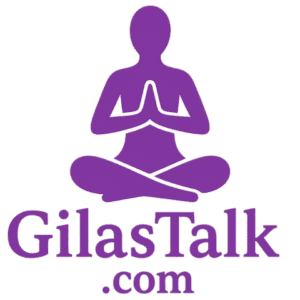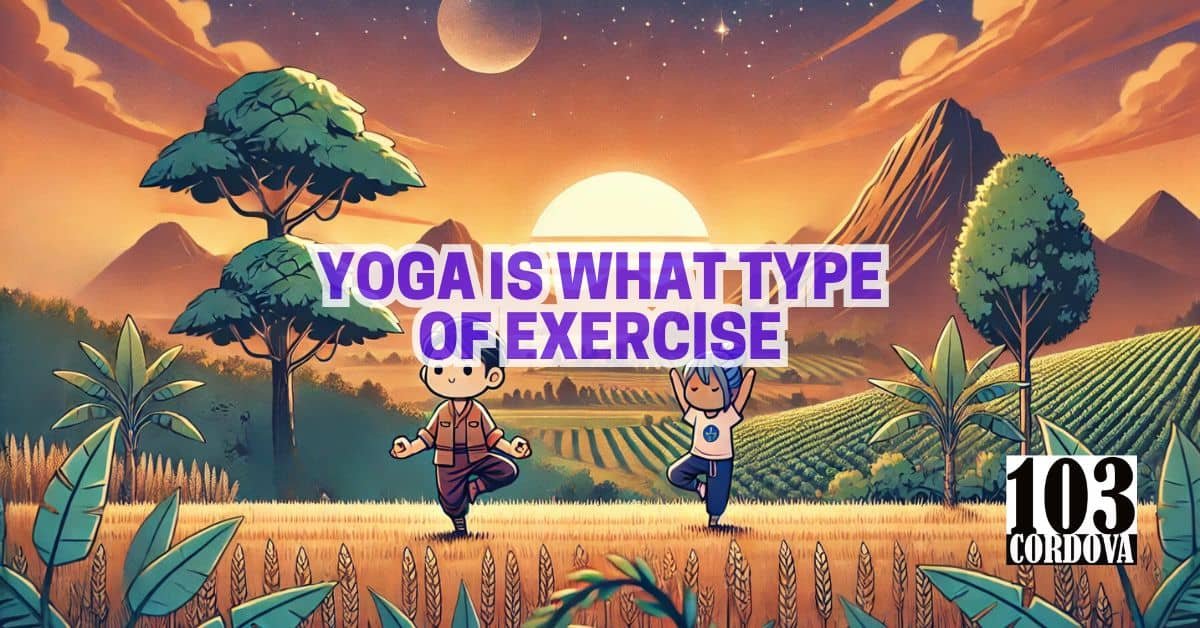Yoga is a unique exercise that combines physical poses with breathing and mental focus to improve both body and mind.
Originating thousands of years ago, it blends tradition and wellness practices that address flexibility, strength, and relaxation.
As yoga evolved, it became more accessible, with many modern styles and levels of intensity available today.
Whether practiced for fitness or stress relief, yoga offers something different from standard workout routines.
We’ll explore the different types of yoga, how it fits into fitness, and how to choose the right style for specific needs.
1. Defining Yoga as Exercise: What Makes It Unique?
Yoga stands out because it is both a physical exercise and a mindful practice, helping people connect with their bodies in meaningful ways.
Unlike workouts that focus only on physical gains, yoga combines movement with breath control and mental focus to enhance overall well-being.
The slow, controlled motions in yoga build flexibility and strength while promoting a calm mental state.
Instead of emphasizing speed or heavy resistance, yoga uses body weight and controlled postures to improve strength and stability.
This unique approach makes yoga beneficial for both physical health and mental clarity.
🧘 Pilates vs. Yoga: Unveiling the Key Differences and Similarities!
2. Comparing Yoga to Other Forms of Exercise: Where Does It Fit?
Yoga is different from other forms of exercise, like running, weightlifting, or high-impact sports, because it emphasizes steady, controlled movements and mindful breathing.
While many workouts aim for cardiovascular strength, calorie burn, or muscle growth, yoga’s goals often focus on flexibility, relaxation, and mind-body balance.
Yoga fits well as a complementary practice, especially for people who participate in high-intensity workouts, providing a slower, restorative option for recovery days.
Unlike weight training or aerobic exercises, yoga encourages awareness of the whole body rather than targeting specific muscles.
This makes it a unique choice that enhances flexibility, balance, and mental calm alongside other fitness practices.
🧘 Finding Your Perfect Fit: Tips for Choosing Online Yoga Classes for Beginners!
3. Exploring the Categories of Yoga: Different Styles Explained
Yoga comes in a variety of styles, each with different purposes and techniques, from the slow Hatha to the fast-paced Vinyasa.
Hatha yoga focuses on simple, gentle poses, making it a good starting point for beginners who want a calm introduction to yoga.
In contrast, Vinyasa yoga moves through poses quickly, providing a more energetic and strength-focused workout.
For those interested in relaxation, Yin and restorative yoga use long-held poses to encourage deep stretching and rest.
Each style of yoga offers unique benefits, allowing people to choose practices that align with their fitness and mental goals.
🧘 Seniors’ Guide to Yoga: Crafting a Home Practice for Wellness and Relaxation!
4. Understanding Intensity Levels: From Gentle to Vigorous Yoga Practices
Yoga includes a wide range of intensity levels, from gentle and restorative to vigorous and challenging.
Gentle yoga styles, like Yin and restorative yoga, focus on slow, passive stretches held for longer periods, promoting relaxation and deep muscle release.
Moderate practices, such as Hatha and Iyengar, offer a balanced approach, combining gentle poses with focused alignment and strength building.
On the more vigorous end, styles like Vinyasa and Ashtanga incorporate faster-paced flows and challenging postures that build strength and cardiovascular endurance.
This range of intensity levels allows people to choose practices that suit their physical fitness and recovery needs.
🧘 Yoga Safety 101: Essential Tips for Seniors Over 60!
5. Key Fitness Components Addressed by Yoga: Flexibility, Strength, and Balance
Yoga strengthens three key areas of fitness: flexibility, strength, and balance.
Flexibility is enhanced through poses that stretch and lengthen muscles, allowing for improved range of motion over time.
Strength is developed as many yoga postures require supporting body weight in poses, engaging core, leg, and arm muscles.
Balance is also integral, with standing and stability poses challenging individuals to build coordination and stability.
Together, these components make yoga a comprehensive exercise that benefits the whole body.
🧘 Chair Yoga Uncovered: Discover the Gentle Path to Wellness for Seniors!
6. Yoga as a Mind-Body Workout: The Holistic Approach Explained
Yoga combines physical exercise with mindfulness, creating a mind-body workout that promotes overall wellness.
Breathing exercises are central to yoga, helping practitioners remain present and focused, which enhances mental clarity and reduces stress.
This mindful aspect allows individuals to be aware of how their body feels, promoting self-acceptance and relaxation.
Unlike many traditional exercises, yoga is centered on self-awareness rather than external competition or achievement.
The holistic approach makes yoga not just an exercise for the body but also a practice for emotional and mental well-being.
🧘 Boost Balance and Stability: How Yoga Transforms Lives for Seniors Over 70!
7. Physical Benefits of Yoga: How It Enhances Overall Fitness
Yoga offers a range of physical benefits that contribute to overall fitness and health.
Regular practice improves flexibility and joint health, helping prevent injuries and promoting better movement in daily life.
Many styles of yoga build strength in key areas, such as the core, arms, and legs, supporting better posture and muscle endurance.
Yoga also positively impacts heart health, as some styles, like Vinyasa, provide cardiovascular benefits that boost circulation and endurance.
By combining flexibility, strength, and heart health, yoga supports a balanced and healthy body.
🧘 Laughter Yoga: Your Guide to Cultivating Joy and Positivity!
8. Inclusivity in Yoga: Who Can Practice and Benefit?
Yoga is a highly inclusive form of exercise, accessible to people of all ages, body types, and fitness levels.
Because it can be modified, yoga accommodates everyone, from beginners and seniors to experienced athletes.
Adaptive yoga practices make it possible for people with limited mobility or specific health conditions to participate and benefit.
Yoga’s inclusivity also extends to various skill levels, as poses can be adjusted for ease or increased difficulty.
This accessibility ensures that almost anyone can engage in yoga, making it a welcoming form of exercise for a broad audience.
🧘 Is Yoga Anaerobic? Unpacking the Science Behind Yoga Practices!
9. Incorporating Yoga into Your Fitness Routine: Tips and Ideas
Adding yoga to a fitness routine is a great way to improve flexibility, support recovery, and balance high-intensity workouts.
For beginners, starting with shorter sessions a few times a week can build comfort and introduce the body to stretching and gentle movements.
Athletes and gym-goers can use yoga on rest days to reduce muscle soreness and improve range of motion.
Consistency is key, and over time, even a 10–15 minute daily practice can contribute to improved physical and mental well-being.
Mixing yoga with other exercises, like running or strength training, creates a balanced workout routine that benefits the entire body.
10. Finding the Right Yoga Style for Your Exercise Goals
Choosing a yoga style depends largely on individual fitness goals, as each style offers distinct benefits.
For those seeking relaxation or stress relief, styles like Yin or restorative yoga focus on slow, deep stretching and calm breathing.
Those aiming for strength or endurance may enjoy the fast-paced sequences in Vinyasa or the structured challenge of Ashtanga yoga.
Beginners often find Hatha yoga to be a suitable starting point, offering gentle poses that build comfort and basic flexibility.
Trying different styles can help identify which type of yoga aligns best with personal exercise preferences and goals.
🧘 103 Cordova Yoga Studio Marikina City
💡 Conclusion
Yoga is a unique and flexible form of exercise that offers benefits across physical, mental, and emotional health.
Its combination of movement, breathwork, and mindfulness sets it apart from traditional workouts, providing both physical fitness and stress relief.
With various styles and intensity levels, yoga accommodates people of all ages, fitness backgrounds, and health needs.
Whether someone seeks strength, flexibility, relaxation, or recovery, yoga has a style to meet those goals.
This versatility makes yoga an enriching and accessible practice that fits well into almost any fitness journey.
🧘 Our Services
At our studio located at 103 Cordova Tower, Marquinton Residences, Sto. Nino, Marikina City, we offer yoga classes designed for all ages and fitness levels.
Whether you’re a beginner looking to explore yoga or a seasoned practitioner aiming to deepen your practice, our skilled instructors are here to guide you every step of the way.
Our inclusive environment ensures that everyone feels welcome, supported, and able to practice at their own pace.
For inquiries or to book a class, you can reach us at 09176225780, on Facebook, or through our website’s contact form.
Join us to experience the physical and mental benefits of yoga in a welcoming and supportive community.

